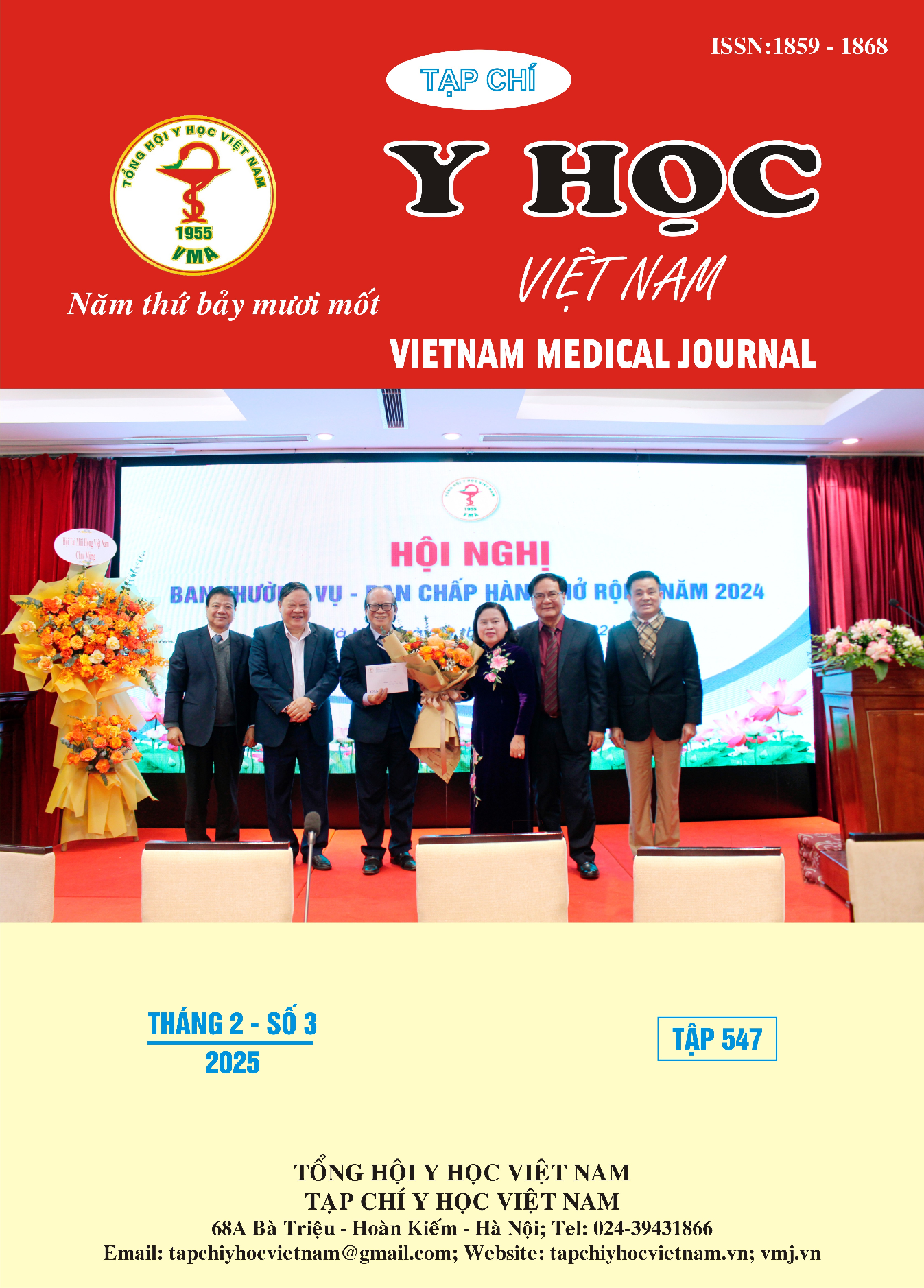CLINICAL FEATURES, IMAGING CHARACTERISTICS, AND SURGICAL OUTCOMES FOR TRANSNASAL ENDOSCOPIC CLIVAL CHORDOMA RESECTION
Main Article Content
Abstract
Objective: To evaluate the surgical results of an endoscopic endonasal approach for clival chordomas. Methods: Retrospective and case series, of 31 patients were performed via the endoscopic transnasal approach for treating clival chordomas at the Neurosurgery Department of Cho Ray Hospital from 06/2018 to 06/2024. Results: The mean age of the 14 male and 17 female patients was 42.8 years (ranging from 23 to 69 years). Clinical features consisted of headache (83.9%), cranial nerve VI palsy (29%), visual acuity decrease (80.6%), bitemporal hemianopsia (38.7%), and cranial nerve III palsy (9.7%). 100% of patients obtained brain MRI, indicating tumors located at the upper-middle clivus (61.3%), upper-third (6.5%), middle-third (3.2%), and completely invaded clivus (22.6%). The mean maximum diameter of tumors was 43.2 mm (17.6 to 67 mm). 38.7% of tumors invade cavernous sinus and 58.1% spread to subdural space. All of the cases were performed via endoscopic transnasal approaches. Gross total removal was achieved in 58% of cases, subtotal removal (29%), and partial removal (12.9%). No mortality occurred, 1 patient (3.2%) had postoperative meningitis, CSF leak occurred in 2 patient (6.4%), and a vision deficit was recorded (3.2%). The mean follow-up period was 19.45 months (ranged 1 to 69 months). The recent postoperative mean KPS score was 88.7 (ranged 80 to 90). The long-term results: 51.6% of patients were cured, 35.5% were under control, and the recurrence rate was 12.9%. Conclusions: The endoscopic transnasal approach is safe and efficient for treating clival chordomas.
Article Details
Keywords
Chordomas, Clival Chordomas, endoscopic endonasal transclival approach, skull base surgery.
References
2. Amit, Moran, et al., "Treatment and outcome of patients with skull base chordoma: a meta-analysis". 2014; 75(06), pp. 383-390.
3. da Silva, Harley Brito, et al., "Cranial chordoma: a new preoperative grading system". 2018; 83(3), pp. 403-415.
4. Dehdashti, Amir R, et al., "Expanded endoscopic endonasal approach for anterior cranial base and suprasellar lesions: indications and limitations". 2009; 64(4), pp. 677-689.
5. Morita, Akio, Sekhar, Laligam N, and Wright, Donald C %J Cancer control, "Current concepts in the management of tumors of the skull base". 1998; 5(2), pp. 138-149.
6. Pamir, M. Necmettin, Al-Mefty, Ossama, and Borda, Luis A. B., "Chordomas: Technologies, Techiques, and Treatment Strategies". 2016.
7. Quinones-Hinojosa, Alfredo, Schmidek and Sweet: Operative Neurosurgical Techniques, ed. 6th, Elsevier. 2012
8. Samii, Madjid, et al., "Surgical treatment of epidermoid cysts of the cerebellopontine angle". 1996; 84(1), pp. 14-19.
9. Shkarubo, Alexey N, et al., "Endoscopic endonasal transclival removal of tumors of the clivus and anterior region of the posterior cranial fossa (results of surgical treatment of 140 patients)". 2018; 4, pp. 1-14.
10. Winn, H. Richard (2022), Youmans and Winn Neurological Surgery, ed. 8th, Elsevier, 2022: 1365-1373.


